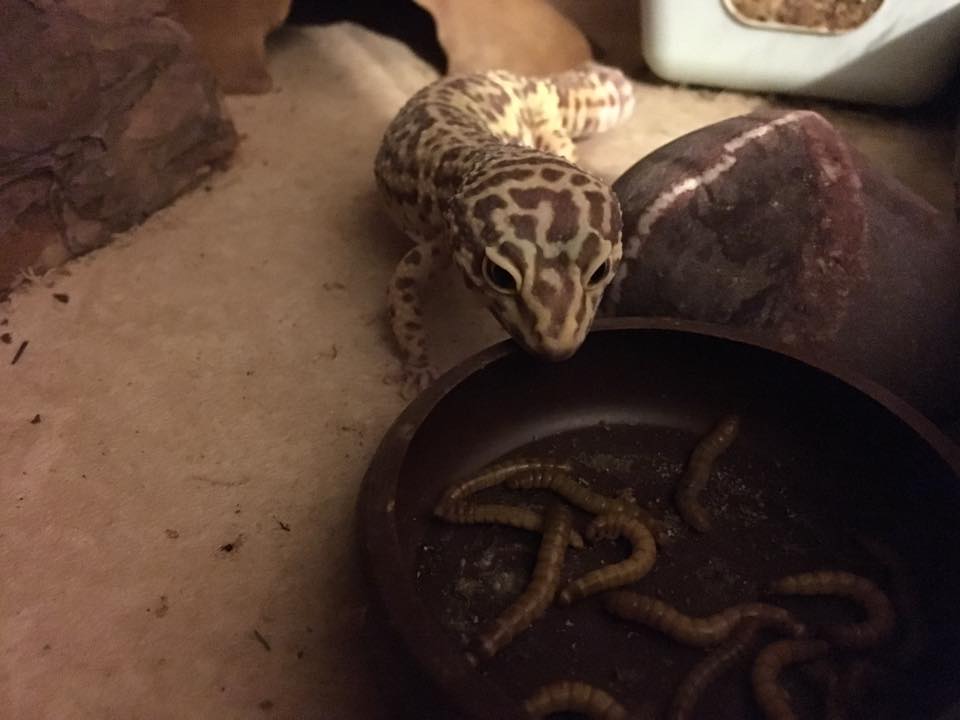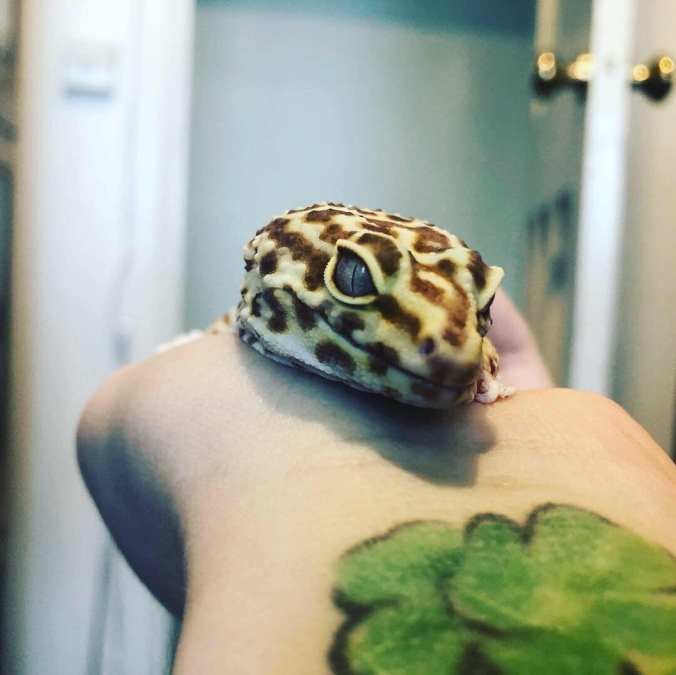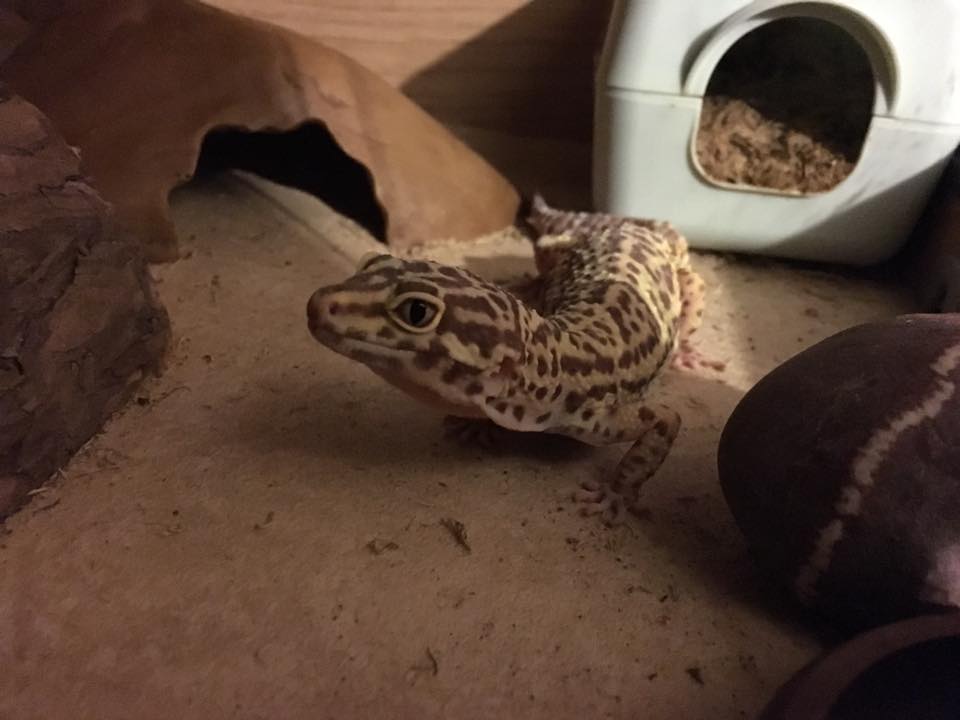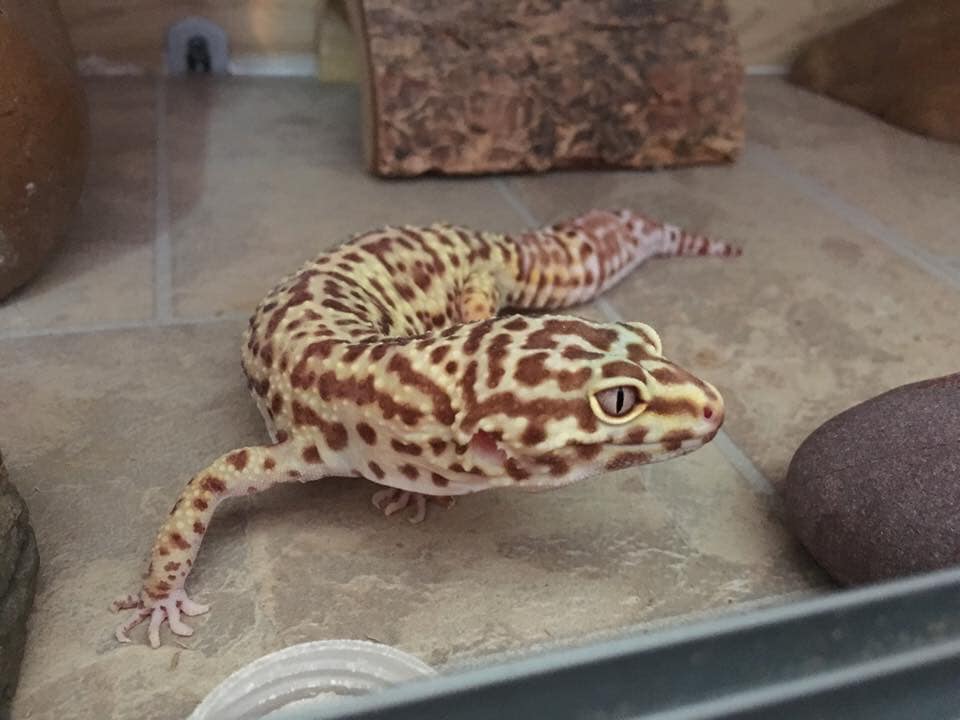Leopard geckos are popular lizards and make great companions. Here is a brief Leopard Gecko care for beginners guide to tell you the 10 things you need to know before owning a Leopard Gecko.
They live a long time
They may be no bigger than a hamster, but the Leopard Gecko lifespan can reach 10 years old, some have even reported being as old as 20 years! If you get your gecko from a pet shop they are likely to be a juvenile, meaning you should have your lizard for a long time if you look after them well. It’s great news they can reach such a grand age, but this does mean they are a long term commitment. If you are planning to go to University, go travelling or not sure if your future home would allow pets, really think if now is the best time to get a Leopard gecko, or if you should wait until your life is a bit more stable.
Leopard Gecko Care For Beginners: They can need baths
Like many reptiles, Leopard geckos shed their skin and whilst you should offer a moist hide in their home consisting of a plastic box with a hole in and damp moss to help them shed, warm baths can also help them remove that skin if they are struggling, especially around their tiny toes! It can be tempting to help your little pal out by pulling any loose shed, but resist the temptation as it could rip their skin, or introduce bacteria so it’s best to leave them to it. Don’t bath them too often, only if they have stuck shed.
To bath them, fill a container with tepid water and don’t make it too deep as these little lizards cannot swim. You can place a small flannel on the bottom of the bath so they don’t slip. A bath around 5-10 minutes is long enough.
Don’t ever leave your lizard unattended in their bath.

They eat live food
If you want to keep a Leopard gecko, you must be ok with feeding them live food, as this is all their diet consists of. It is vital that you keep your live food well so they pass all the goodness on to you gecko. Good food items for geckos are mealworms, crickets, waxworms (as a treat), calci worms, roaches or locust, just make sure they are the right size for your gecko – a good rule of thumb is the prey item should not be larger of the width between your gecko’s eyes. The food item also needs to be dusted with calcidust and vitamins.

They need to go to an exotic vets
The vet you use for your dog or cat may not be able to treat your gecko, which means you may need to travel further afield if your gecko becomes unwell. Exotic vets are usually more expensive than dog or cat vets – this is because the Veterinary Surgeons and Veterinary nurses have undergone extra training to know how to care for all sorts of exotic animals, they also need specialist equipment at their practice which many small animal vets do not have.
As soon as you’ve read the rest of this guide to Leopard Gecko care for beginners, make sure you have a vet to use and register your gecko with them as soon as you can. That way, should your pet become unwell you have already done the legwork and know who you need to contact. There is nothing worse than having a sick pet and panicking about where to take them. Get that planned now and hopefully, you will never need them!
They are very placid
One of the best things about Leopard geckos is they have such placid natures, making them ideal for new lizard owners. Remember these lizards are very small, so it’s always best practice to sit on the floor when you handle them, that way, if they were to fall, it wouldn’t be a long drop.
Children can be taught to gently hold them by sitting on the floor and cupping their hands, allowing the lizard to walk over them. As with any reptile, you should always wash your hands before and after touching them, especially children.

They need a heat source – Ideal Leopard Gecko Temperature
Leopard geckos originate from Pakistan, India, and Afganistan and so their captive environment needs to reflect this. You can keep your gecko in a vivarium or glass tank with a heat mat on one end. This will allow your gecko to do something called thermo-regulation. If you take one piece of information from this guide to leopard gecko care for beginners, it’s this.
As geckos are unable to regulate their own temperature, they need an external source to warm up or cool down. You must make sure your heat mat is attached to a thermostat to control the leopard gecko temperature, and it’s always a good idea to have a thermometer within their cage so you can monitor the temperature. Their hot end (where the heat mat is) should reach 23-27 Celcius.
They are crepuscular
Many people think Leopard geckos are nocturnal (meaning they are awake at night), but they are actually crepuscular (like rabbits), which means they are most active at dawn and dusk. Because they come out when it’s dark, they don’t need a UV light, making their set up simpler.
You should also bear this in mind when you want to get your gecko out to interact with you, I know I wouldn’t want to be woken up when I’m asleep and neither will your gecko, so wait until the evening to get them out. You will need to give them a dark hide to sleep in within their cage too, to make them happy.
Calci sand is bad for them
Calci sand has long been advertised for reptiles, and whilst some use it with no issues, there have been reports of lizards eating the sand as becoming impacted. What kind of lizard eats sand, right? Well, they can ingest the sand when hunting, which is how it gets into their body. Because of the risk, it’s better to remove it altogether and keep them on either lino, paper towels or reptile carpet. Don’t forget a good reptile disinfectant to clean their tank with too.
They are ground dwelling
Leopard geckos aren’t climbers like other geckos, such as Crested geckos and because of this, need a tank that is longer than it is tall. That being said, you can put smooth rocks in their tank to give them different surfaces to walk on, just make sure it isn’t too high because they could hurt themselves if they were to fall.

They can drop their tail
A healthy Leopard gecko should have a fat tail, this is where excess fat is stored and they can use it when food is scarce. If a Leopard gecko is grabbed by the tail, they can detach their tail (this is called autotomy) and the tail will wiggle to distract the predator whilst they run free. Whilst the tail can grow back, it will never look the same as it once did and is usually shorter, duller in colour, and blunt at the end, so never grab your gecko by their tail.
If your gecko loses its tail, keep the tank clean (use paper towels) and watch for any sign of infection, redness or discharge. They eat more than normal to replenish the lost fat storage. If you have any concerns, always contact your vet for advice.
Thanks for reading this Leopard Gecko Care Guide for Beginners – I hope you now feel more prepared for when you bring your Leopard gecko home! Still undecided on what reptile to get? Have you considered a Bearded Dragon?


Thank you for the information!
for anybody wanting to get a pet for their kid I recommend getting bearded dragon they are a lot more fun and are nice pets
Thank you for the information I have five geckos now and I know pretty much everything I need to know but this little article helped me so much because it provided me with some valuable information that I might need in the future. Thank you!
Anybody looking for a good reptile friend leopard geckos are amazing I highly recommend them. I am hoping to raise them in the future because I love them so much I have two males and three females.